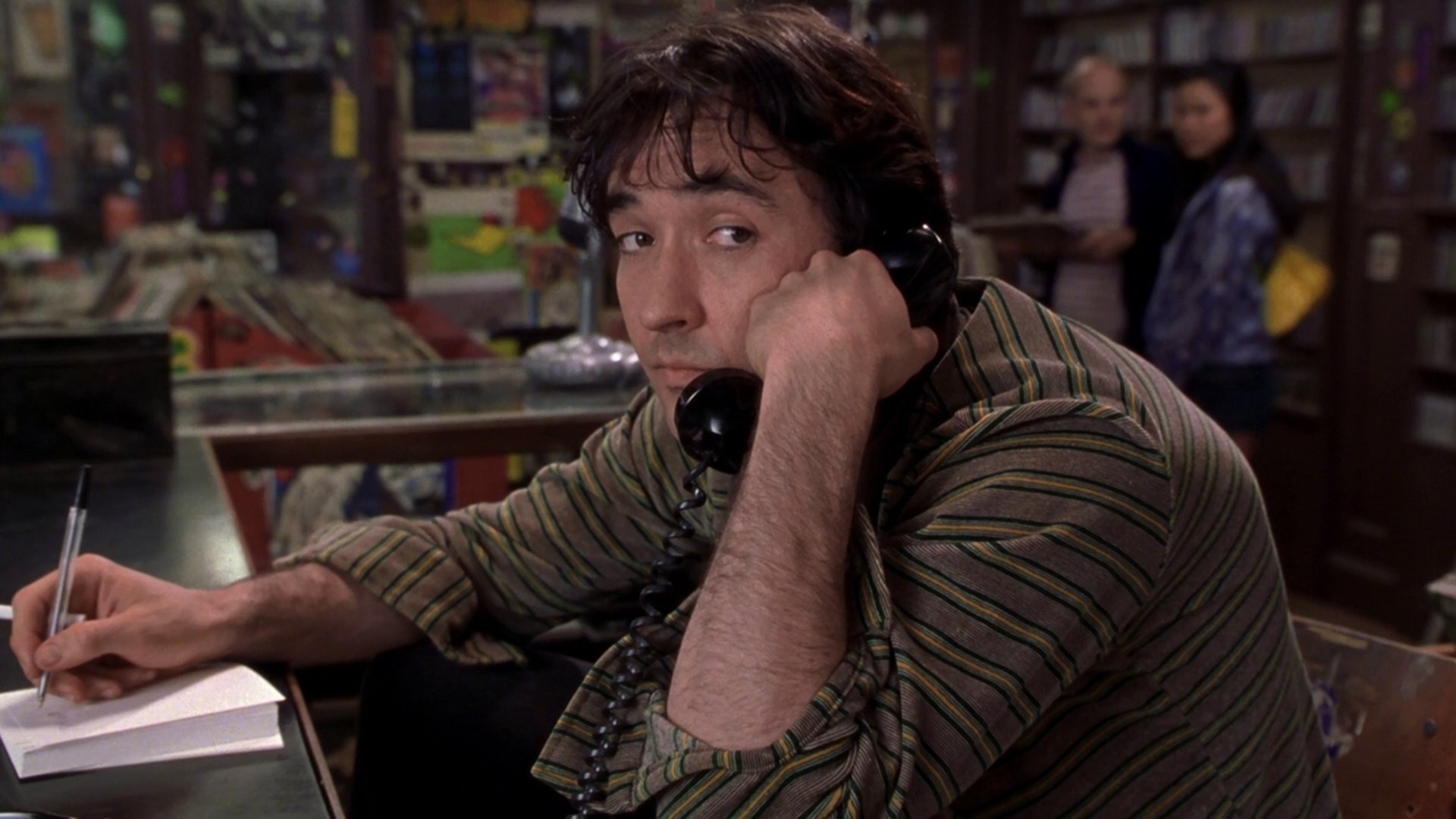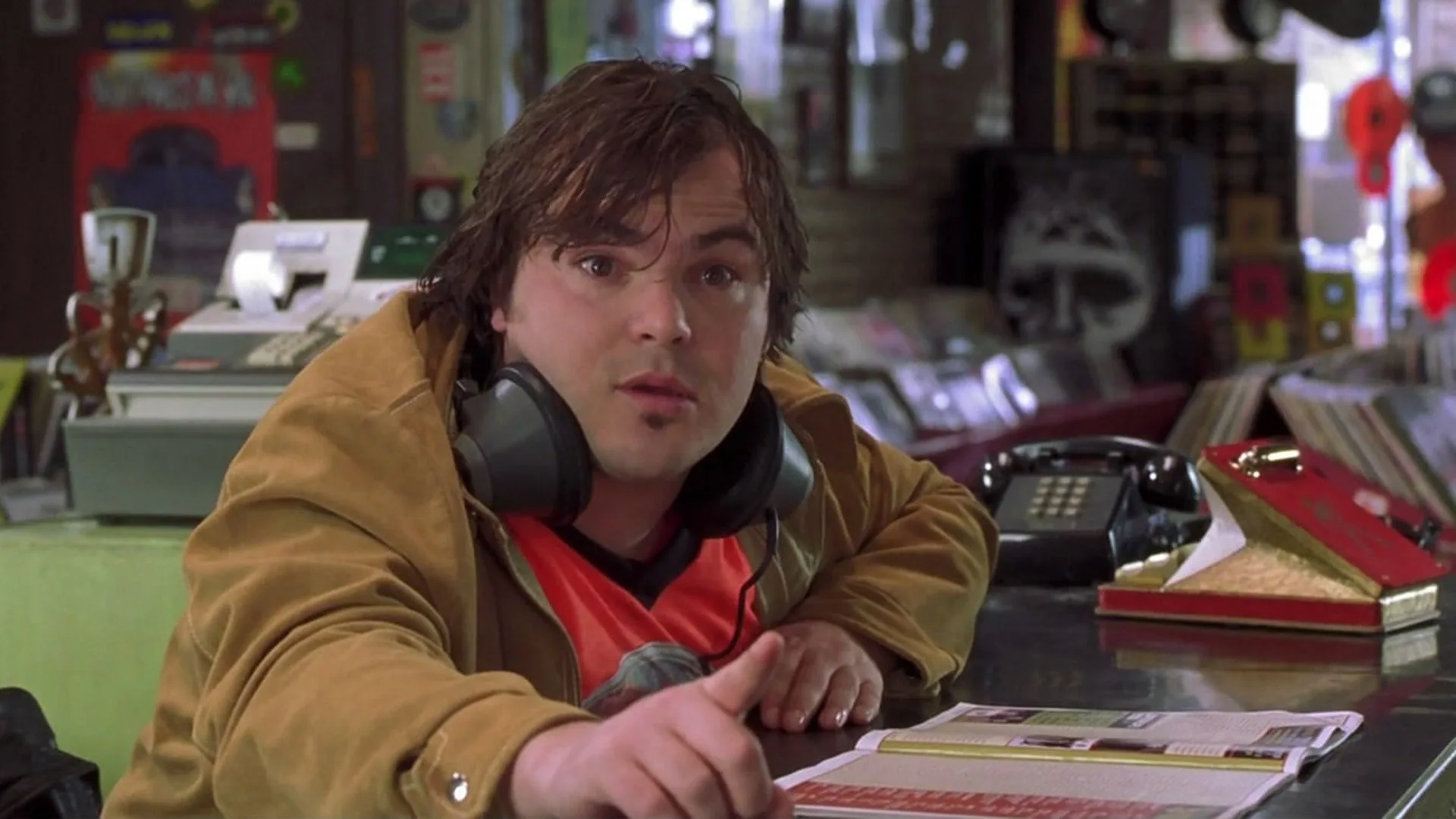
When we look back at John Cusack’s expressive and bruised-heart romantic Rob Gordon in “High Fidelity” a quarter-century after the film’s release, there’s little doubt Rob was often a petulant and immature narcissist who filtered nearly every life experience only through what it meant to him. At times, it seemed like it would shock Rob to learn his actions and words have consequences—that he’s responsible for the state of his own life.
There are moments when we’re stunned, even nauseated, by Rob’s self-absorbed reaction to revelations from former girlfriends, e.g., Joelle Carter’s Penny setting him straight about the trauma she experienced after their breakup—and Rob making her pain all about him. What makes “High Fidelity” an enduring Chicago classic despite—what makes it still poignant, funny, and insightful—is that the Stephen Frears-directed adaptation of Nick Hornby’s 1995 novel frequently acknowledges Rob’s flaws. Cusack imbues him with a raw vulnerability, a spark of humanity, and just enough growth to make him move the needle toward Rob being likable. Somewhere just north of the age of 30, surrounding himself in protective layers of vinyl- and cassette-based hipsterism, he’s at least trying to embark on a journey of self-discovery. By the time Rob bids farewell to us as Stevie Wonder’s “I Believe (When I Fall in Love It Will Be Forever)” swells into the closing credits, we hope for the best for Rob.
Even if we doubt his on-and-off relationship with Iben Hjelje’s Laura will last.
Like Hornby’s memoir Fever Pitch, “High Fidelity” was thoroughly British in its sensibilities, but Frears and the screenwriting team (which included Cusack) did a spectacular job of retaining the spirit of the book while shifting the locale to Chicago. (The 2005 Americanized version of “Fever Pitch,” switching the sport from soccer to baseball and starring current talk show hosts Jimmy Fallon and Drew Barrymore, almost sounds like parody—but it actually kinda works.) Hornby’s novel was adapted into a short-lived Broadway musical in 2006, with not-quite-immortal songs such as “The Last Real Record Store” and “Number Five with a Bullet,” and updated for a Brooklyn-set, gender-switching Hulu series in 2020—but the 2000 feature film remains the definitive adaptation.
Rewatching “High Fidelity,” one is struck by how well it serves as a time capsule of turn-of-the-millennium Chicago, primarily the Wicker Park neighborhood in all its bohemian, alt-rock, thrift-store, shabby-cool glory. Even when the locations expand to Lakeview, Lincoln Park and River North, every frame of “High Fidelity” feels true to the time. We believe these characters live in these spaces. We marvel at Chicago touchstones (some still here, some gone), including the Double Door, the Green Mill Lounge, the Music Box Theatre, Hi Ricky Asia Noodle Shop & Satay Bar, and Lounge Ax. The Irish cinematographer Seamus McGarvey would go on to deliver gorgeous and sometimes breathtaking visuals in the Joe Wright films “Atonement” and “Anna Karenina,” not to mention “The Avengers,” but his work here is equally impressive, in a lower key. The Chicago we see here is gritty, lived-in, real. “High Fidelity” occupies the same universe as the likes of “Ferris Bueller’s Day Off,” but the images are worlds away.
Walking out of the Biograph Theater, Cusack as Rob tells us, “John Dillinger was shot dead behind that theater in a hail of gunfire. Do you know who tipped them off? His f***** girlfriend.” That’s dark. And funny. Cusack is effortlessly natural in breaking the fourth wall; he has nearly as many lines with “us” as he does with any in-movie character. Rob wears his psyche on his sleeve, whether he’s musing about why he is the way he is—“Did I listen to pop music because I was miserable, or was I miserable because I listened to pop music?”—or admitting he was in over his head with the beautiful and worldly Charlie (Catherine Zeta-Jones): “I never got comfortable. Why would a woman like Charlie go out with me?” It’s well-calibrated work encased within shambling physicality.
In an underrated performance, Iben Hjelje shines as Laura, a corporate attorney who has outgrown her pink-hair days and has seemingly outgrown Rob, but has her own undercurrent of instability. After Laura leaves Rob, Rob launches into his “desert island, all-time, top five, most memorable breakups, in chronological order,” and sets out to revisit each of those women from his past. Throughout that trip, “High Fidelity” reminds us of the last generation before smartphones and social media, a time of landlines and answering machines, phone books and indoor smoking, mix tapes, and desperate calls from rain-soaked telephone kiosks. (Rob is forever getting caught in deluges. You’d think Chicago was in Colombia or Papua New Guinea.)
Rob’s record store employees and friends, the manic Barry (an electric Jack Black) and the painfully shy Dick (Todd Louiso, expertly playing kindest soul in Rob’s world) provide a kind of Geek Greek chorus to Rob’s emotional rollercoaster ride; Championship Vinyl is one of the few places in the world where these two misfits can be pop culture bullies, or at least feel like they belong. Meanwhile, Cusack creates one of his most memorable romantic and intense and often obsessive characters, alongside the boombox-toting Lloyd Dobler in 1989’s “Say Anything.” (Martin in “Grosse Point Blank,” Jonathan in “Serendipity” and Jake in “Must Love Dogs” could round out a “Top Five List of John Cusack Borderline Stalker Roles.”) It’s no small feat for Cusack to draw us into so many characters that might be more abrasive than endearing were it not for his inherent, regular-guy likability.

Of course, the songs are a huge component of the story; this is about as close as a movie can get to being a musical without actually being one, with needle drops ranging from “You’re Gonna Miss Me” by 13th Floor Elevators to “Robbin’s Nest” by Illinois Jacquet to Barry White’s “I’m Gonna Love You Just a Little More, Babe,” plus Bruce Springsteen’s cameo and Jack Black’s star-making rendition of “Let’s Get It On.”
On my recent revisit, I also got a kick out of the familial bonds prevalent in the casting—including one that wouldn’t manifest until two decades later. John’s sister, Joan Cusack, is a burst of comedic energy as Rob’s (rightfully) judgmental sister, Liz. Their father, Dick Cusack, is the minister at Laura’s father’s funeral. John and Joan’s sister Susie Cusack appears as a guest at Charlie’s dinner party. (Ugh, that whole bunch is INSUFFERABLE.) Margaret Travolta, sister of John, plays Rob’s mother. Natasha Gregson Wagner (daughter of producer Richard Gregson and Natalie Wood and stepdaughter of Robert Wagner) plays the beguiling music columnist Caroline Forts, who briefly captures Rob’s interests. Lisa Bonet is a casual scene-stealer as the sultry singer Marie De Salle, who has a brief tryst with Rob but sees right through him. (Twenty years later, Bonet’s daughter Zoë Kravitz would play Crown Heights record store owner Robyn “Rob” Brooks in the Hulu series.)
A 2010 article in Chicago magazine placed “High Fidelity” atop its list of the best Chicago movies of all time. I’m not quite there. With contenders such as “Mickey One,” “Cooley High,” “Thief,” “Risky Business,” “The Untouchables,” “The Blues Brothers,” “The Fugitive,” “Barbershop,” and “The Dark Knight.” I wouldn’t put it in my personal Top 5—but if we expand that list to 10 or 12, “High Fidelity” definitely charts.
Source link

